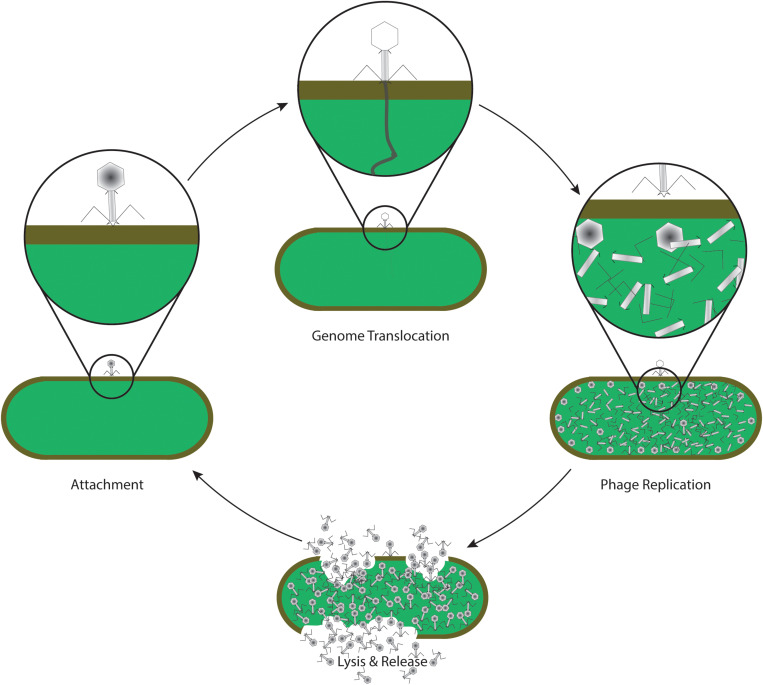FIGURE 2.
Life cycle of a lytic phage, commonly used in phage therapy. After specific recognition and attachment to the host cell (attachment), phage proteins insert into the envelope of the cell, forming a channel through which the viral genome is translocated into the cytoplasm of the bacterium (genome translocation). The host machinery replicates the genomic information, and synthesizes phage proteins which self-assemble to form the virus structure (phage replication). Later in the life cycle, specific phage proteins such as holins and endolysins are synthesized. Enzymatic activity of endolysins leads to a disintegration of the host envelope, resulting in host cell lysis and release of phage progeny (lysis and release). The new phages are now able to attach and infect new host cells again, continuing the life cycle.

